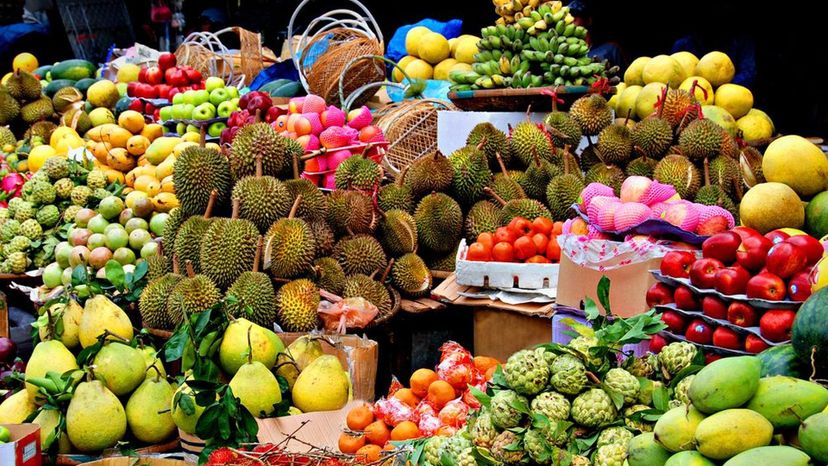
Image: Shutterstock
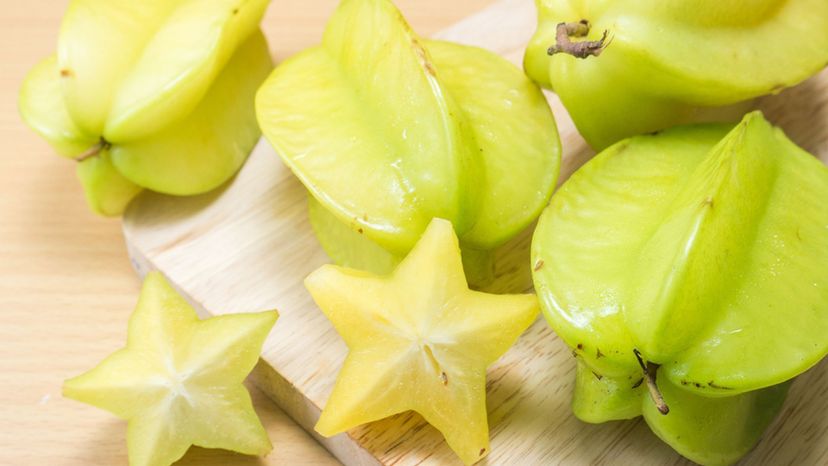
TMDB or Shutterstock
Which exotic fruit/vegetable corresponds with this image?
Starfruit
The starfruit is also called carambola. The outside skin of the starfruit is waxy. When it is not as ripe it is tart and when it is ripe it has a sweet and sour taste. This fruit is beautiful and fun to serve because its star appearance and color please everyone.
Sugar Apple
Sapodilla
Sugar Plum
Advertisement
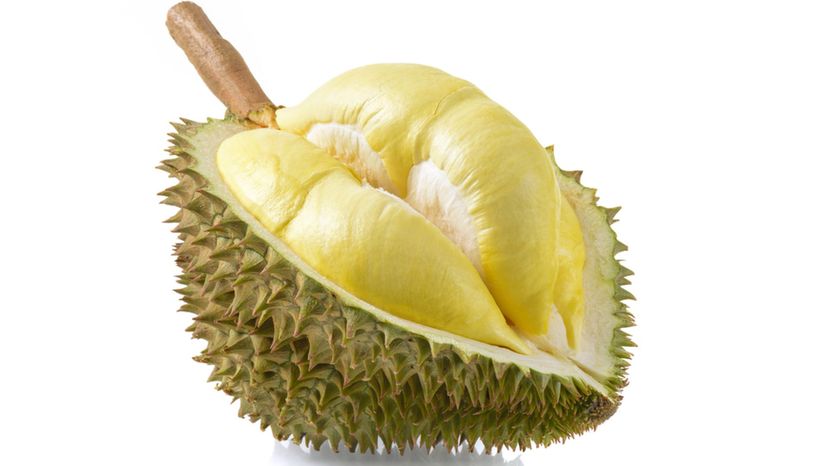
TMDB or Shutterstock
Which exotic fruit/vegetable corresponds with this image?
Dulse
Feijoas
Black Sapote
Durian
The durian is one of the most exotic and mysterious fruits. It has a horrendous smell, so pungent many won't dare to even try it. This is one of those fruits where the phrase "you either love it or you hate it" applies. It is commonly used as an ice cream flavor in Central America.
Advertisement
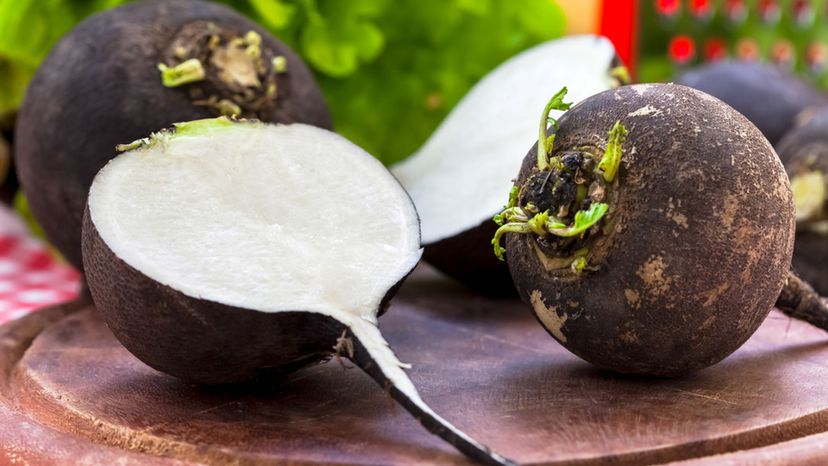
TMDB or Shutterstock
Which exotic fruit/vegetable corresponds with this image?
Ugli Fruit
Quince
Haricot Bean
Black Radish
Black radish boasts of having plenty of natural antioxidants. It contains a high level of Vitamin C, which is crucial for our skin to fight against aging. If you drink a glass of black radish juice every day, you can combat hair loss.
Advertisement
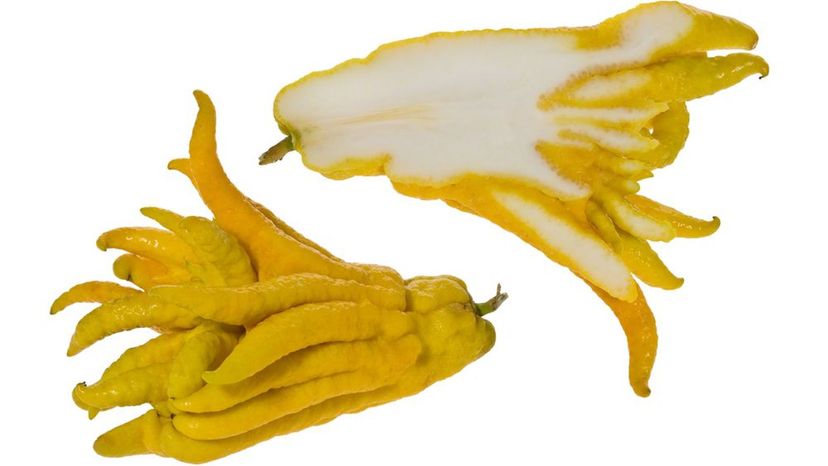
TMDB or Shutterstock
Which exotic fruit/vegetable corresponds with this image?
Buddha's Hand
Buddha's hand looks like a strange deformed Halloween decoration, but it is actually part of the citron family. Its "fingers" can be segmented and eaten; however, it is typically used for its citrus-like fragrance or for zest. Buddha's hand is native to Northeast India and China.
Chayote
Cucamelon
Bottle Gourd
Advertisement
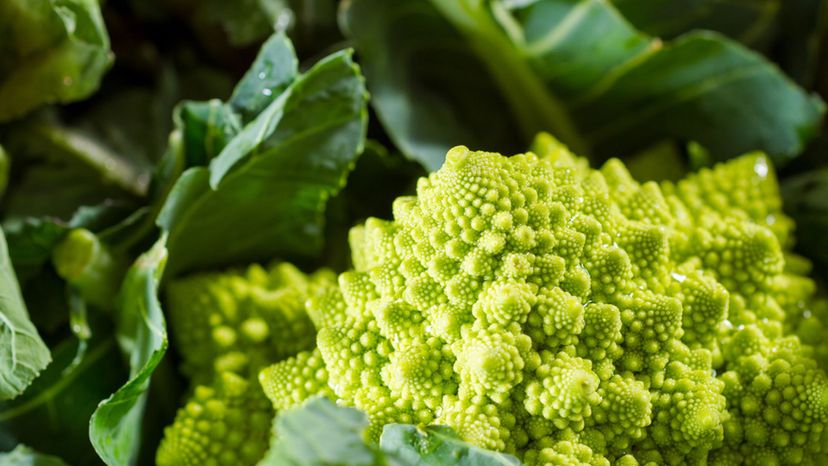
TMDB or Shutterstock
Which exotic fruit/vegetable corresponds with this image?
Rambutan
Rose Apples
Salak
Romanesco
The romanesco looks like a lime-green cauliflower with a more intricate design. This vegetable comes from Italy and tastes exactly like your average cauliflower. It can be substituted for a plainer looking veggie in most recipes.
Advertisement
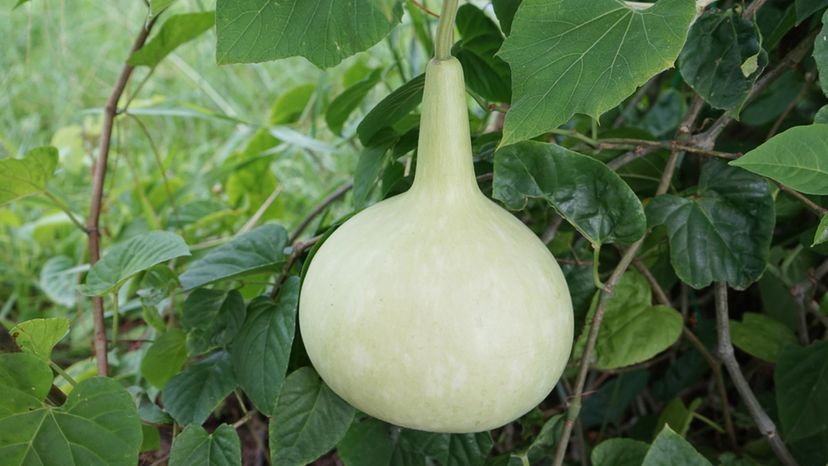
TMDB or Shutterstock
Which exotic fruit/vegetable corresponds with this image?
Chayote
Canistel
Buddha's Hand
Bottle Gourd
The bottle gourd, or calabash, grows on a vine. It is eaten like a vegetable and also is used as a bowl or container when it's dried. Certain dishes in Indian and Chinese cuisines use the bottle gourd in their recipes. The gourd is often used as a container in Japan.
Advertisement
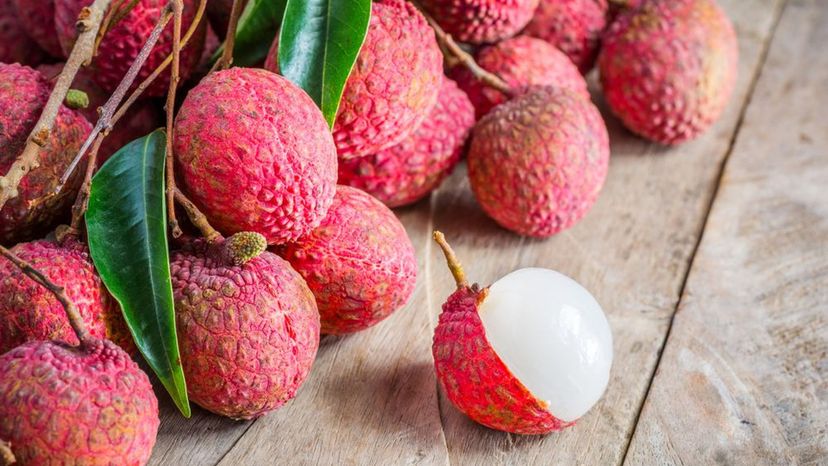
TMDB or Shutterstock
Which exotic fruit/vegetable corresponds with this image?
Mangosteen
Monstera Deliciosa
Loquat
Lychee
Lychees are small tree fruits that look like raspberries with stems, but you don't eat the shell. Under the red and pink layer is a clear flesh that has a texture similar to grapes. Lychee are popular and native to Asia, but they have become common in other parts of the world.
Advertisement
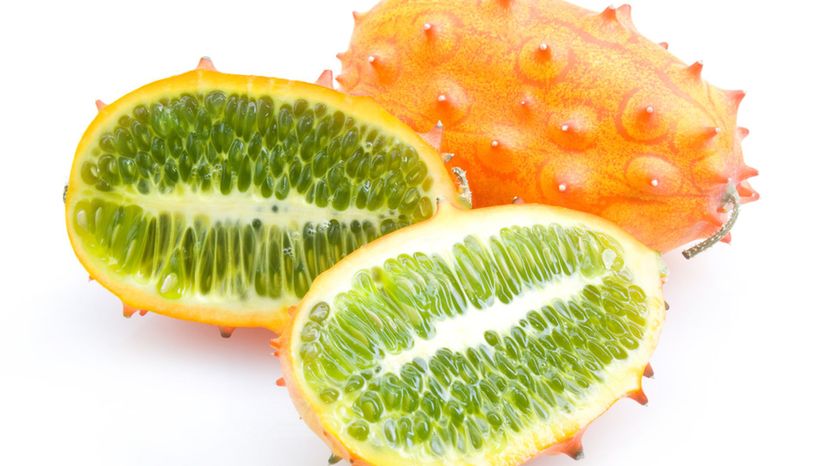
TMDB or Shutterstock
Which exotic fruit/vegetable corresponds with this image?
African Cucumber
African Cucumber has been grown for its ornamental and edible fruits for over 3,000 years. It has a spotted green skin with a bright golden yellow to orange color when it is ripe. African cucumber tastes like a combination of cucumber and zucchini, or of banana, cucumber, and lemon.
Aubergine
Beetroot
Broad Bean
Advertisement
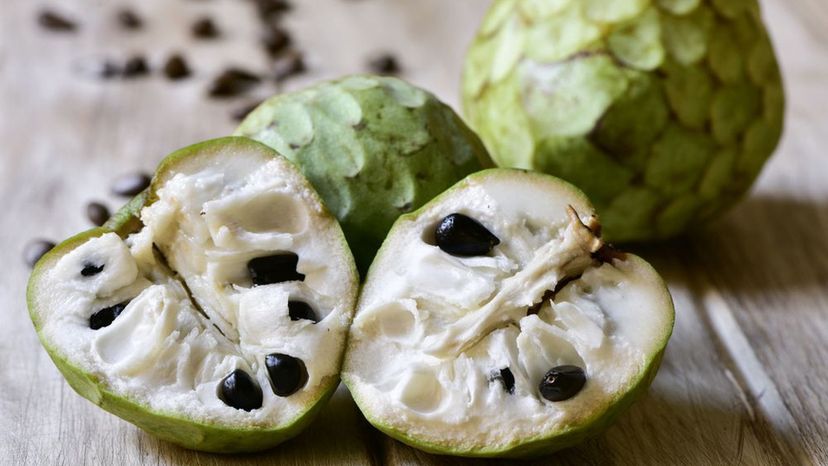
TMDB or Shutterstock
Which exotic fruit/vegetable corresponds with this image?
Endive
Elderberry
Cherimoya
The cherimoya is a member of the custard apple family, which includes the soursop, sweetsop, and atemoya. Cherimoya are oblong and vaguely heart-shaped, with leathery green skin. The sweet taste is something like a mango/papaya/banana combination.
Courgette
Advertisement
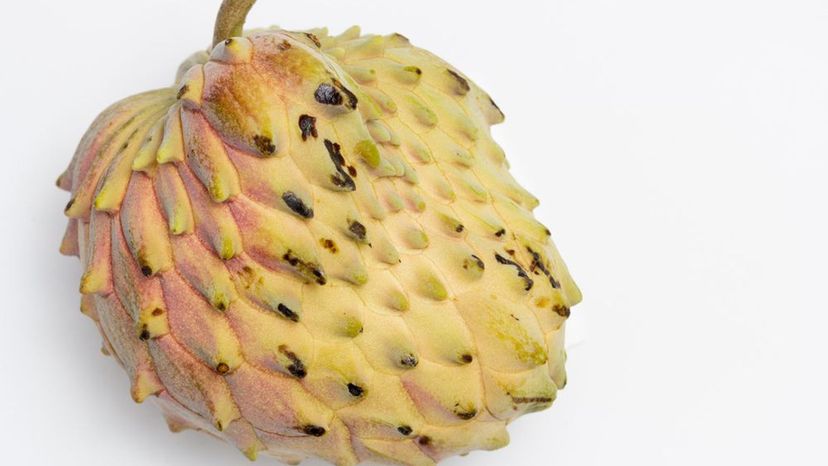
TMDB or Shutterstock
Which exotic fruit/vegetable corresponds with this image?
African Pride
Bradley
Geffner
Atemoya
The atemoya is a hybrid of two fruits – the sugar apple and the cherimoya. Both fruits are native to the American tropics. The atemoya is a flexible and robust fruit that is normally heart-shaped, with pale green bumpy skin.
Advertisement
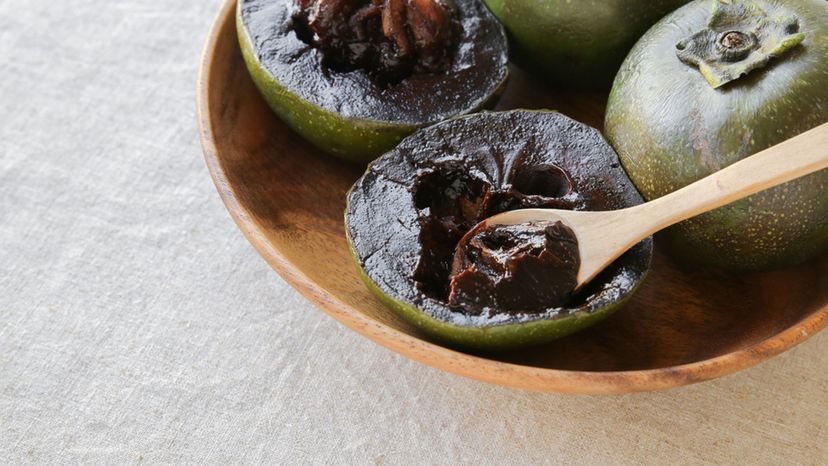
TMDB or Shutterstock
Which exotic fruit/vegetable corresponds with this image?
Victoria Plum
Black Sapote
The black sapote is native to Mexico and Guatemala. It is cultivated in Florida, the Philippines, the Dominican Republic, Cuba, and Hawaii. Often ice cream is made with Black Sapotes. Many different drinks are made from it, as well as a certain type of liquor.
Beetroot
Bottle Gourd
Advertisement
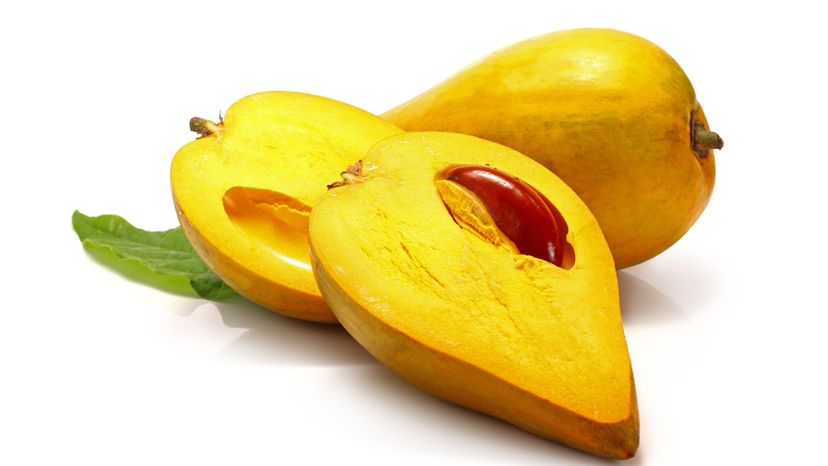
TMDB or Shutterstock
Which exotic fruit/vegetable corresponds with this image?
Dandelion Greens
Cucamelon
Chayote
Canistel
Canistel is an egg-like-fruit, with a similar texture to a boiled egg. It is not super juicy, but is sweet and can be eaten raw. Its texture is used in custards, ice cream, and sorbet. Canistels are native to Mexico but are popular throughout several countries in Asia.
Advertisement
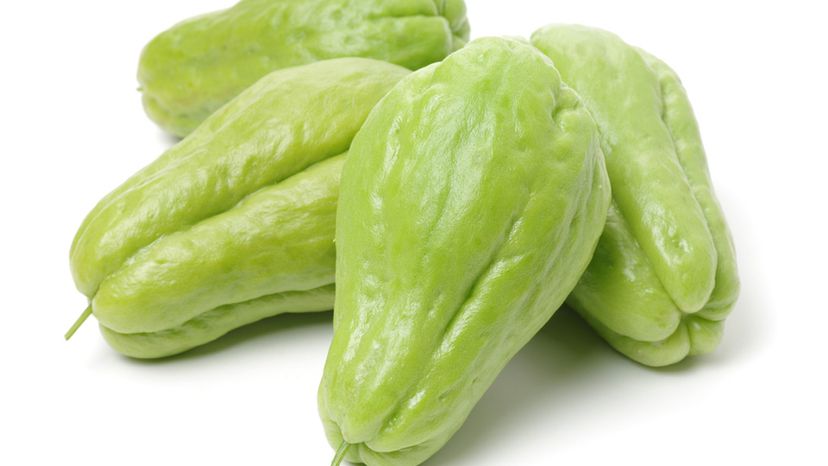
TMDB or Shutterstock
Which exotic fruit/vegetable corresponds with this image?
Dulse
Chayote
The chayote is technically a fruit, but it is often cooked and eaten like a vegetable. It is similar to a potato or a cucumber and can be boiled, fried, baked, or pickled. Chayote is native to Mexico and Central America, but locals in Australia and New Zealand grow chayote as well.
Cucamelon
Dandelion Greens
Advertisement
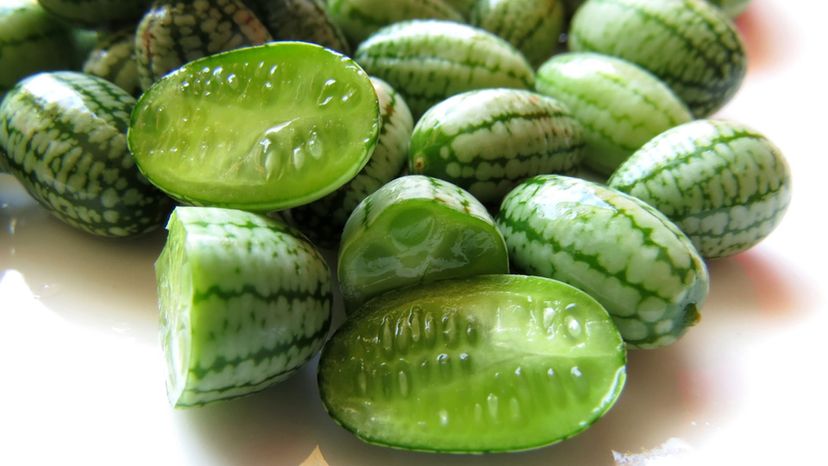
TMDB or Shutterstock
Which exotic fruit/vegetable corresponds with this image?
Dandelion Greens
Chayote
Dulse
Cucamelon
Cucamelons are native to Mexico and Central America. They taste like sour cucumbers but look like baby watermelons. Some common nicknames are sour gherkin and Mexican miniature watermelon. They grow on vines and are about the size of grapes.
Advertisement
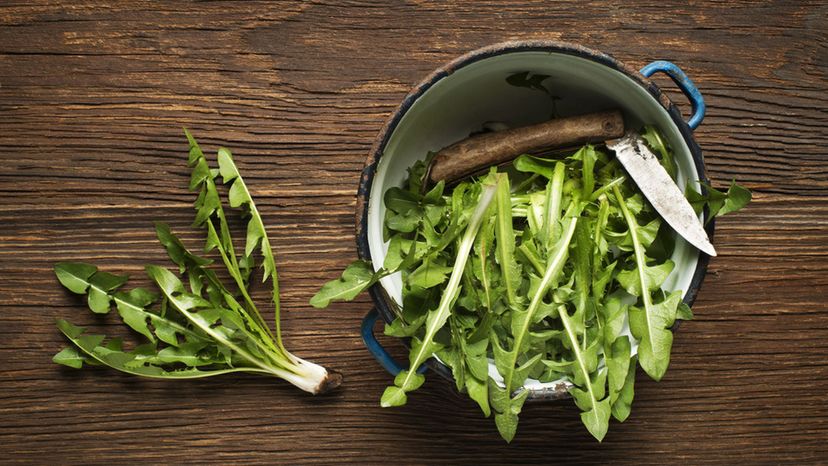
TMDB or Shutterstock
Which exotic fruit/vegetable corresponds with this image?
Feijoas
Dandelion Greens
Dandelion greens are commonly known as a particularly annoying and cumbersome weed. However, it turns out that these "weeds" are edible and delicious! They are typically paired with rich, bold foods, because of their bitter flavor, and they're eaten all over the world.
Dulse
Durian
Advertisement
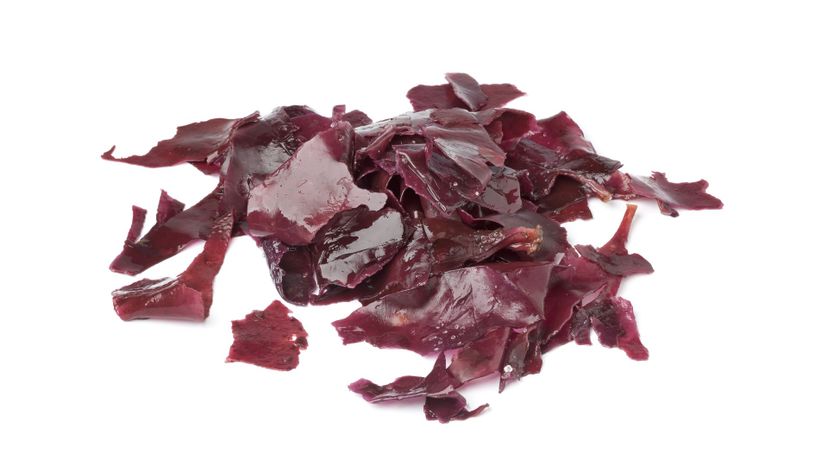
TMDB or Shutterstock
Which exotic fruit/vegetable corresponds with this image?
Durian
Feijoas
Dulse
Veggies don't only grow on land; they also grow underwater. Dulse is a red and brown sea vegetable. It is commonly purchased as whole leaves or in powdered form, to be mixed in smoothies for a nutrient boost. It is chewy and slightly salty, but when cooked dulse gets crispy.
Dandelion Greens
Advertisement
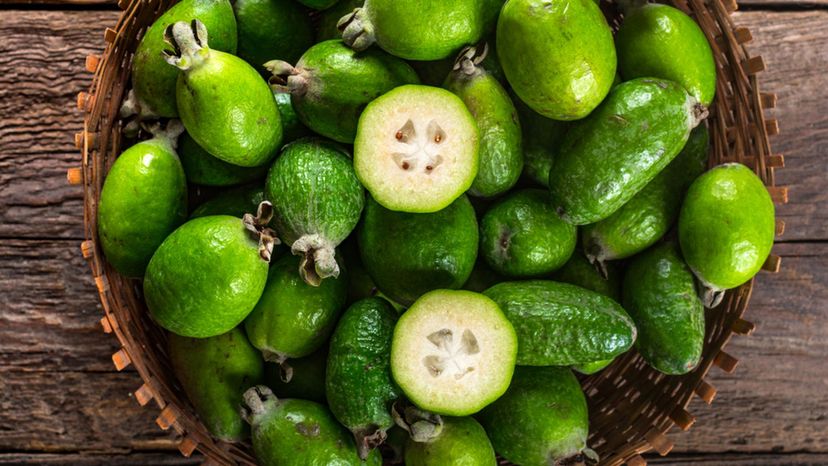
TMDB or Shutterstock
Which exotic fruit/vegetable corresponds with this image?
Gai Lan
Guanabana
Fiddleheads
Feijoas
These small green fruits are commonly mistaken for kiwis. They are egg-shaped, and the inner meat can be eaten along with the pulp and seeds. The texture is similar to a pear, while the flavor is slightly citrusy and sweet. Feijoas are best when they are soft and ripe.
Advertisement
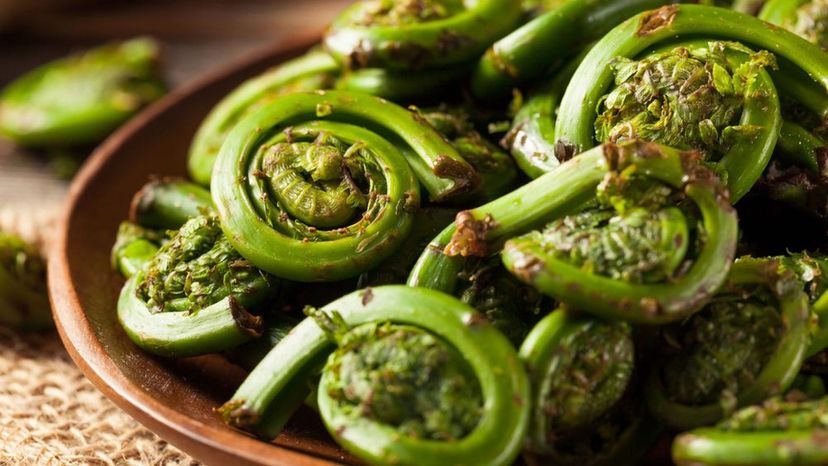
TMDB or Shutterstock
Which exotic fruit/vegetable corresponds with this image?
Guanabana
Fiddleheads
Fiddleheads are the curled fronds of a young fern plant, that can be cut off and eaten in stir-fry and other savory dishes. These oddly shaped veggies are commonly used in Northern France and Asia. They have a grassy flavor and can only be found during the spring.
Jabuticaba
Gai Lan
Advertisement

TMDB or Shutterstock
Which exotic fruit/vegetable corresponds with this image?
Gai Lan
Gai Lan is also called Chinese broccoli. While it doesn't have florets like broccoli does, the flavor is very similar to broccoli. Gai Lan is slightly more bitter than broccoli. The green leaves and stalks are often stir-fried or boiled.
Fiddleheads
Guanabana
Jabuticaba
Advertisement
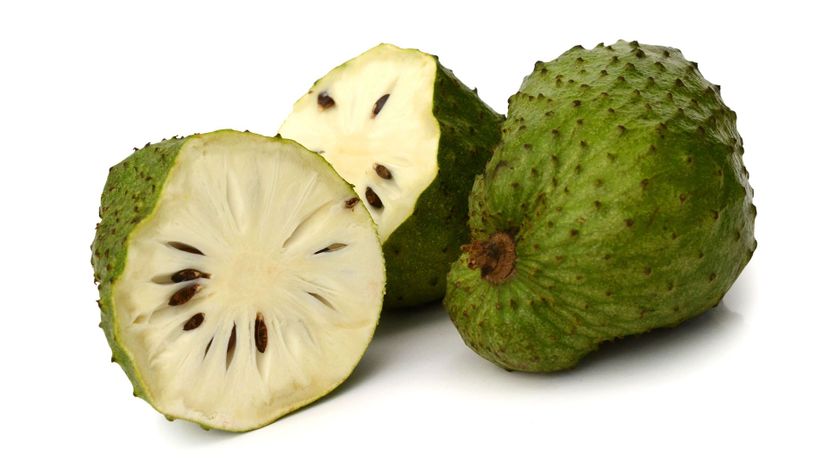
TMDB or Shutterstock
Which exotic fruit/vegetable corresponds with this image?
Jabuticaba
Jackfruit
Guanabana
The guanabana, which is also called the soursop, is native to Central and South America but actually grown in Asia. Large inedible seeds make its white pulp difficult to eat. Its flavor is similar to pineapple or strawberry.
Gai Lan
Advertisement
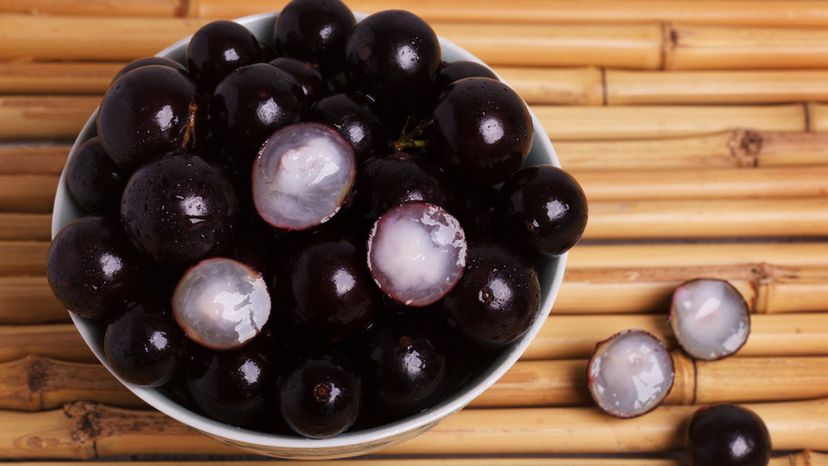
TMDB or Shutterstock
Which exotic fruit/vegetable corresponds with this image?
Jicama
Kalamansi
Jackfruit
Jabuticaba
Jamuticaba look like plum-sized grapes. They grow directly on tree trunks and branches. Jamuticaba are eaten fresh and also used to make liqueur and wines. The fruit is native to Latin America and is not commonly found far from there, because it has a very short shelf life.
Advertisement
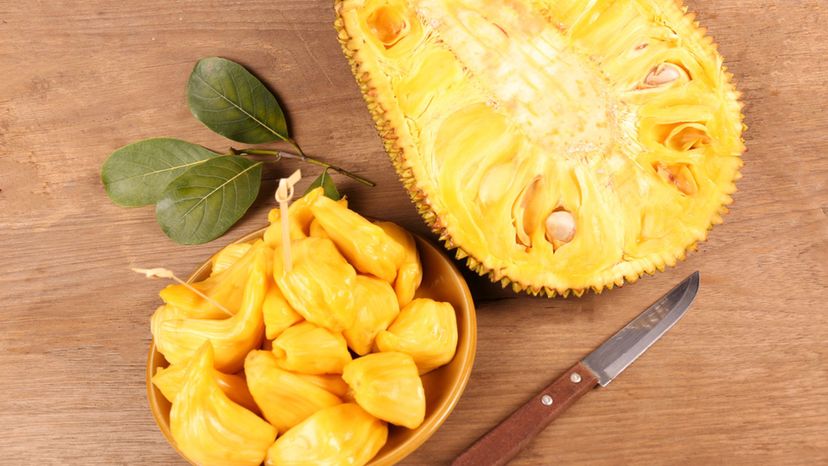
TMDB or Shutterstock
Which exotic fruit/vegetable corresponds with this image?
Kalamansi
Jackfruit
The jackfruit is quite large. It is crazy that these fruits grow on trees, because they can weigh up to 80 pounds each. They are often compared to bananas, but with a more tart flavor. Jackfruits are used for cooking in Asia and are also eaten raw.
Jabuticaba
Jicama
Advertisement
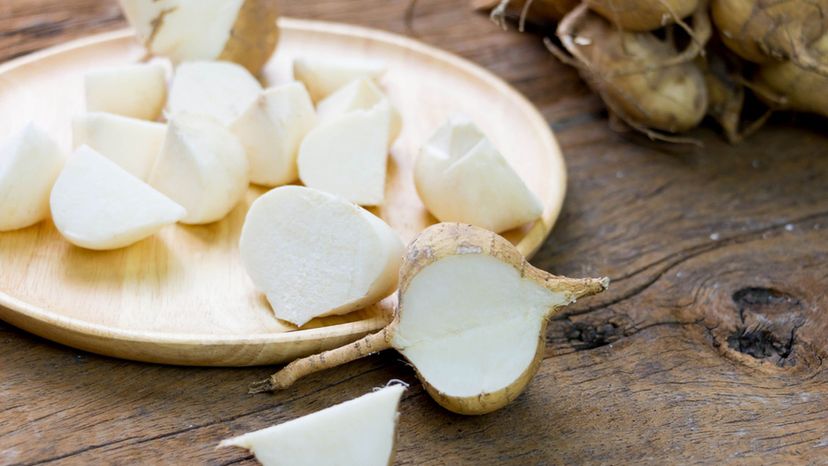
TMDB or Shutterstock
Which exotic fruit/vegetable corresponds with this image?
Jackfruit
Kalamansi
Kohlrabi
Jicama
This veggie isn't the most attractive of the bunch, but when peeled it is white, crunchy, and mild. It can be used in place of potatoes or water chestnuts and is commonly used in Mexican cooking, but it is popular in Asia as well.
Advertisement
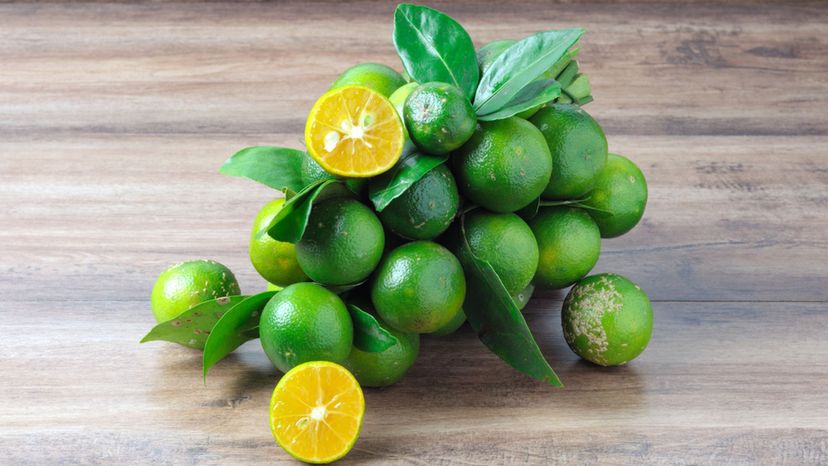
TMDB or Shutterstock
Which exotic fruit/vegetable corresponds with this image?
Kumquat
Jicama
Calamansi
Calamansi, or Calamondin, looks like a cross between a tangerine and a lime. It is native to Asia and is popular throughout the Philippines. Calamansi is used for its tart, acidic flavor. If it is left on the tree after ripening, it will turn orange.
Kohlrabi
Advertisement
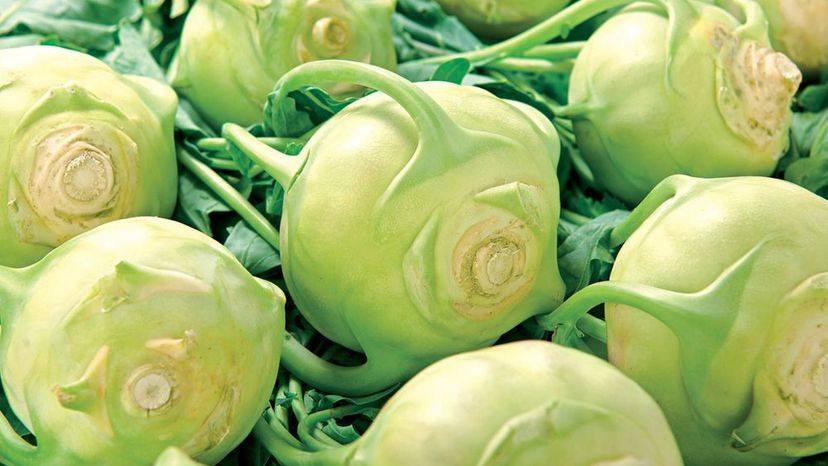
TMDB or Shutterstock
Which exotic fruit/vegetable corresponds with this image?
Kumquat
Kohlrabi
Despite Kohlrabi's thick outer layer, the inner flesh is juicy and crisp. Under the double layering of skin lies the best part of the kohlrabi. The flavor of Kohlrabi can be compared to a cabbage heart, which isn't that surprising since the two veggies are in the same family.
Langsat
Loquat
Advertisement
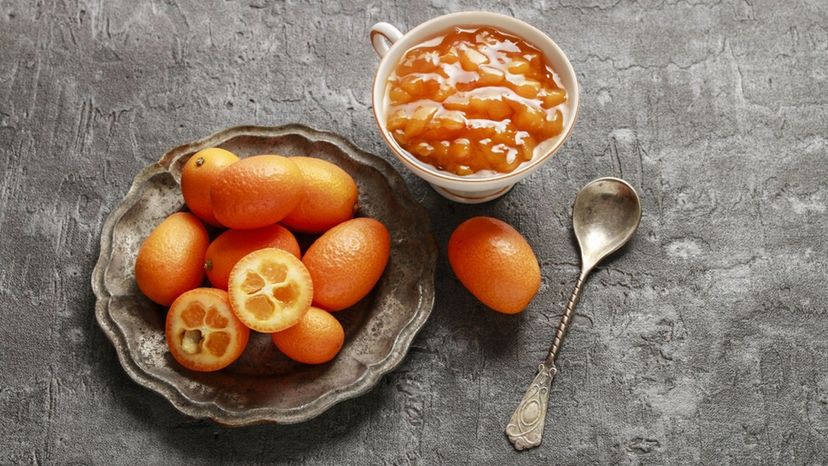
TMDB or Shutterstock
Which exotic fruit/vegetable corresponds with this image?
Loquat
Kumquat
Kumquats are tiny, oval citrus fruits. They are similar in size to berries. They are different from other citrus fruits because the skin is eaten along with the inside and center. The peel provides a sweet contrast to the tart, sour inner fruit.
Guanabana
Langsat
Advertisement
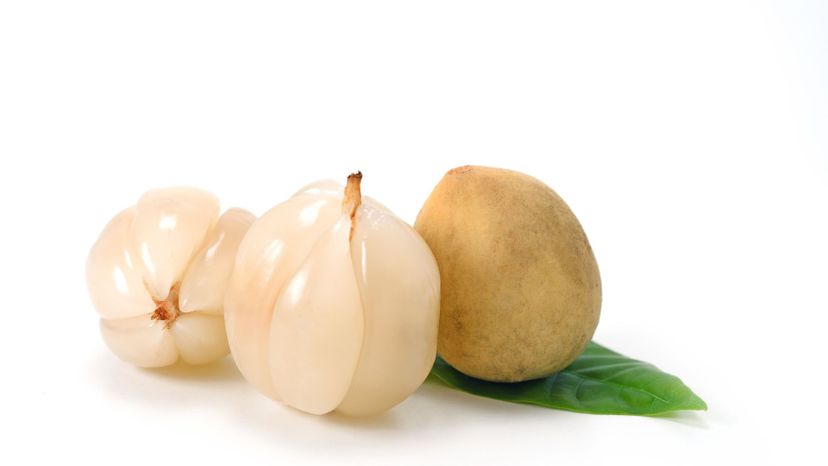
TMDB or Shutterstock
Which exotic fruit/vegetable corresponds with this image?
Loquat
Lychee
Mangosteen
Langsat
Langsat is a Southeast Asian fruit that is berry-sized and has to be peeled before it can be eaten. Inside the outer shell there is a sweet, clear fruit. Langsats taste like a combination between a grape and a grapefruit, while the texture is more like that of a grape.
Advertisement

TMDB or Shutterstock
Which exotic fruit/vegetable corresponds with this image?
Loquat
Loquats look like apricots. They have seeds inside, instead of pits. Their texture is similar to a melon but is tangy, sweet, and juicy all at once. While these small tree-fruits are native to China, they can now be found all around the world.
Langsat
Lychee
Mangosteen
Advertisement
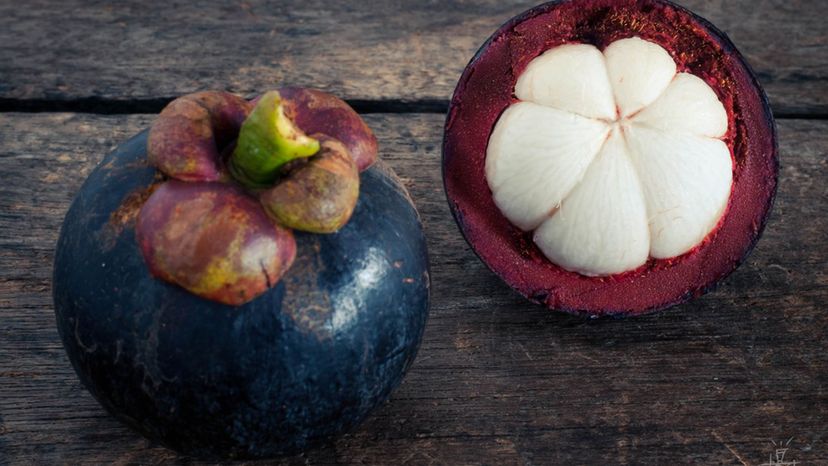
TMDB or Shutterstock
Which exotic fruit/vegetable corresponds with this image?
Mangosteen
The mangosteen was once illegal in the United States because of a fruit fly that was associated with it. Once the ban was lifted, mangosteen prices skyrocketed in specialty stores. The dark outer layer is not eaten, but the fruit inside is sweet, tart, and delicious.
Monstera Deliciosa
Noni Fruit
Paw Paw
Advertisement
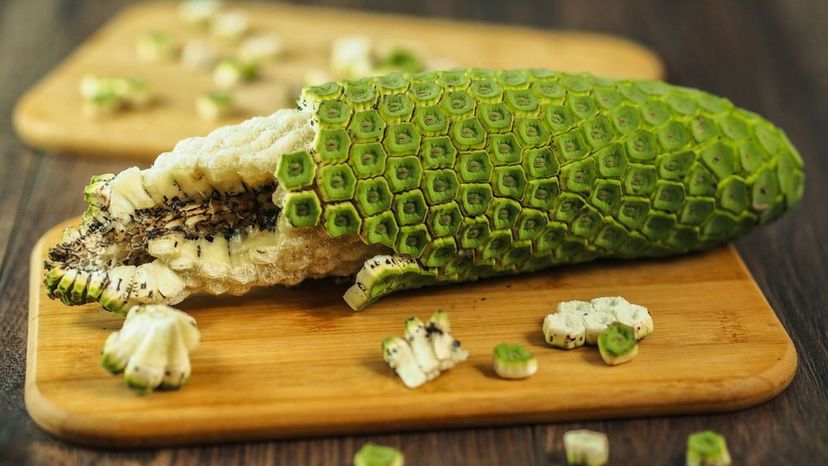
TMDB or Shutterstock
Which exotic fruit/vegetable corresponds with this image?
Poha Berry
Pitaya
Monstera Deliciosa
Monstera Deliciousa is native to Central America. They are large and long green fruits. When the fruit is ripe it has a pleasant smell and tastes like a pineapple-banana hybrid. The edible meat underneath the green scales is cut and eaten raw.
Paw Paw
Advertisement
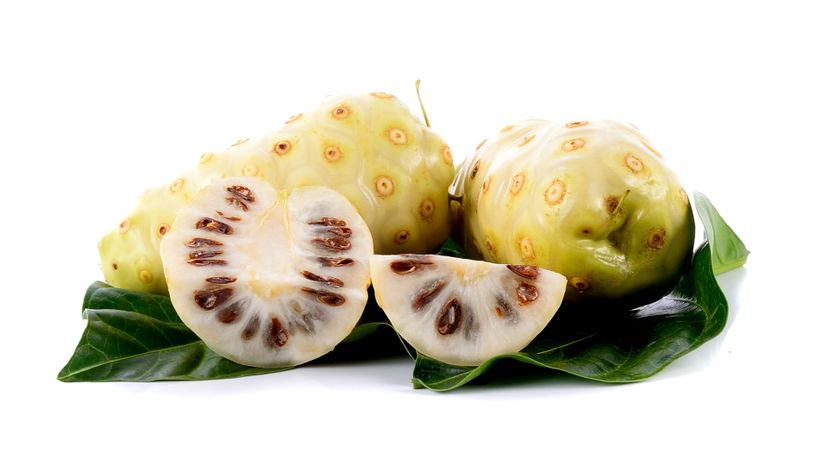
TMDB or Shutterstock
Which exotic fruit/vegetable corresponds with this image?
Pitaya
Noni Fruit
This fruit is another strange-looking thing. A ripe noni fruit is a yellowish white color and the exterior is covered in brown round spots. Although noni fruits are known for their health benefits, they smell bad and they don't taste much better than they smell.
Monstera Deliciosa
Paw Paw
Advertisement
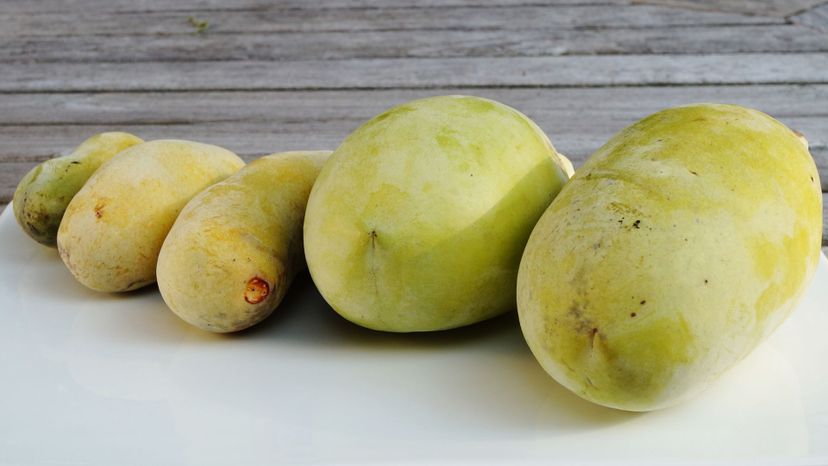
TMDB or Shutterstock
Which exotic fruit/vegetable corresponds with this image?
Pitaya
Rambutan
Poha Berry
Pawpaw
Despite the fact that the pawpaw isn't popular in the US, the fruit is actually native to North America. Pawpaws have a yellow or bright orange flesh underneath the green skin. They have quite a few large brown seeds. The flesh is similar in both texture and flavor to a banana.
Advertisement
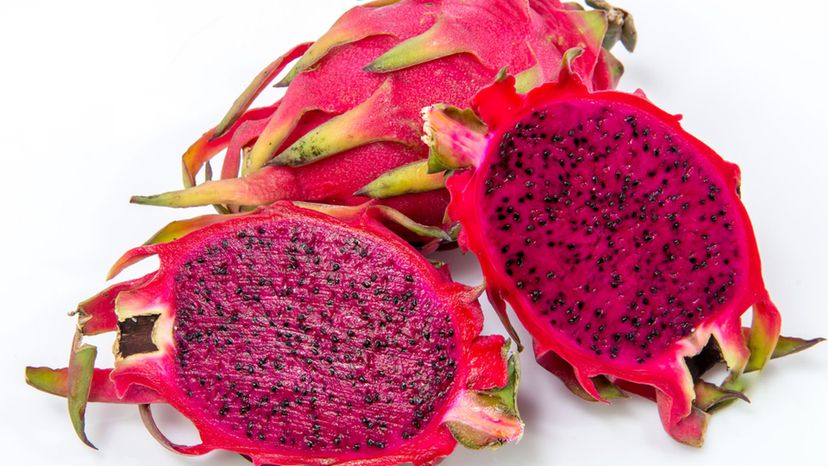
TMDB or Shutterstock
Which exotic fruit/vegetable corresponds with this image?
Poha Berry
Pitaya
The pitaya is also known as dragonfruit. It has a bright pink or white center and is speckled with tiny black seeds. Interestingly, the dragonfruit doesn't have an intense flavor, despite its incredibly bright color. It has been compared to a melon or kiwi, but with a milder flavor.
Paw Paw
Purple Potato
Advertisement
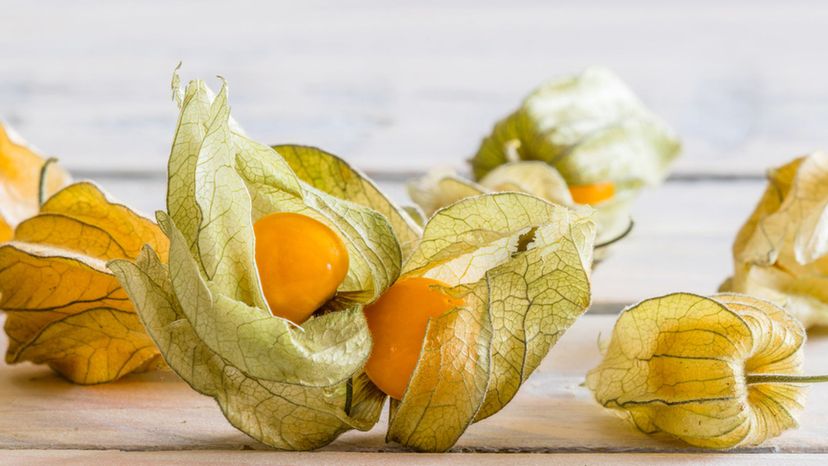
TMDB or Shutterstock
Which exotic fruit/vegetable corresponds with this image?
Rollinia
Rambutan
Pitaya
Poha Berry
Poha berries are orange and have green leaves that encompass and protect its orange fruit. They are sweet and tart with a waxy skin. Poha berries originated in South America but are cultivated in England and South Africa.
Advertisement
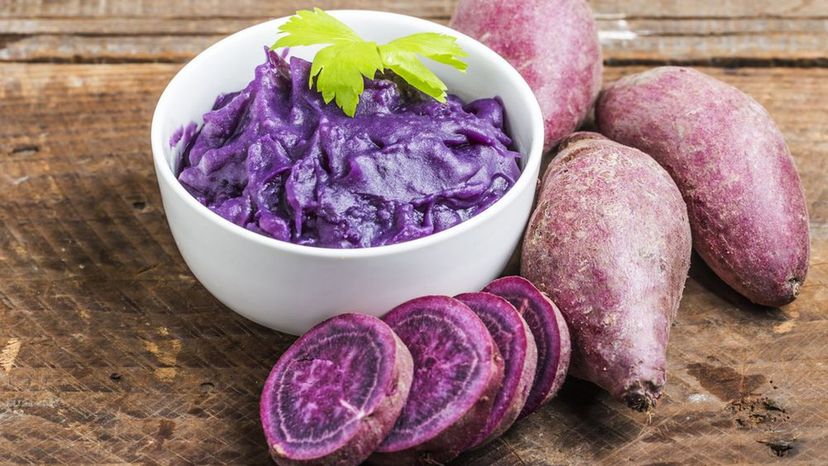
TMDB or Shutterstock
Which exotic fruit/vegetable corresponds with this image?
Rose Apples
Romanescu
Rollinia
Purple Sweet Potato
Sweet potatoes can be found in a variety of colors, but purple is one of the rarer colors to be found. The purple sweet potato is produced in Japan and the U.S. Orange is the likeliest color you will find in most stores in America, however.
Advertisement
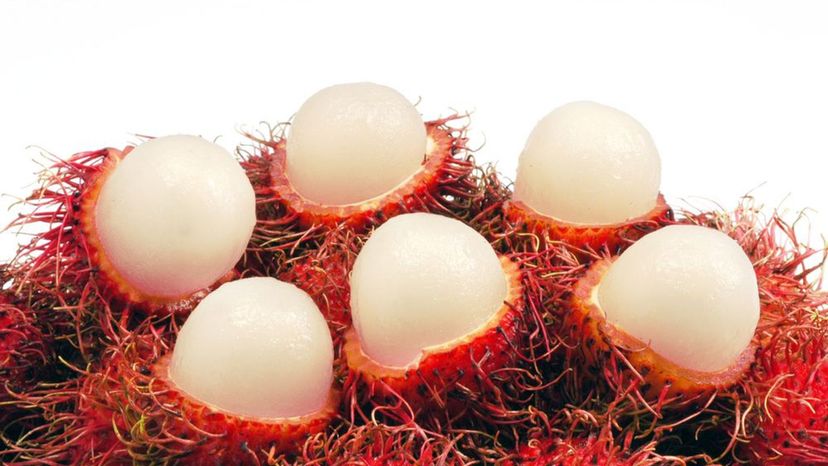
TMDB or Shutterstock
Which exotic fruit/vegetable corresponds with this image?
Rambutan
When looking at a rambutan for the first time, you might not think it is edible. Its spiky outer shell looks a bit frightening, especially because it looks like it is covered in "hair" that is actually a layer of thorns. Ripe rambutans are sweet and similar to lychee fruits.
Rollinia
Romanescu
Rose Apples
Advertisement
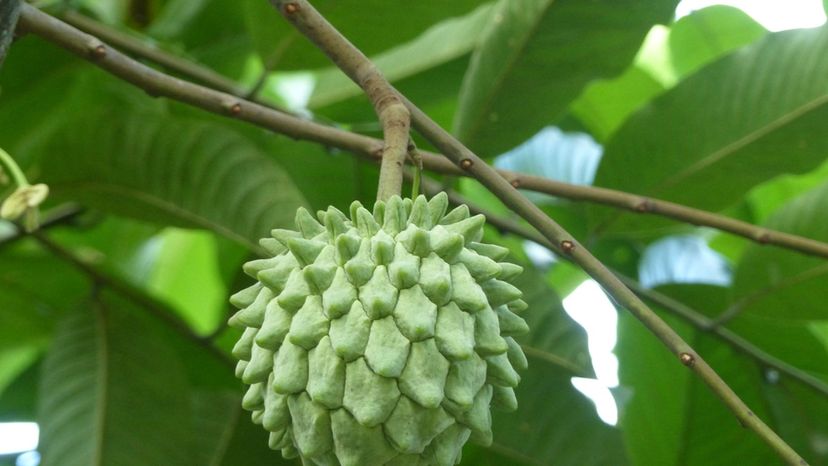
TMDB or Shutterstock
Which exotic fruit/vegetable corresponds with this image?
Rose Apples
Salak
Romanescu
Rollinia
Rollinia are mild, sweet, and slightly citrusy on the inside, but have a sort of off-putting outer appearance. The yellow fruit is covered in spikes, which turn dark brown when the fruit becomes ripe, which might make some think that it is past ripe.
Advertisement
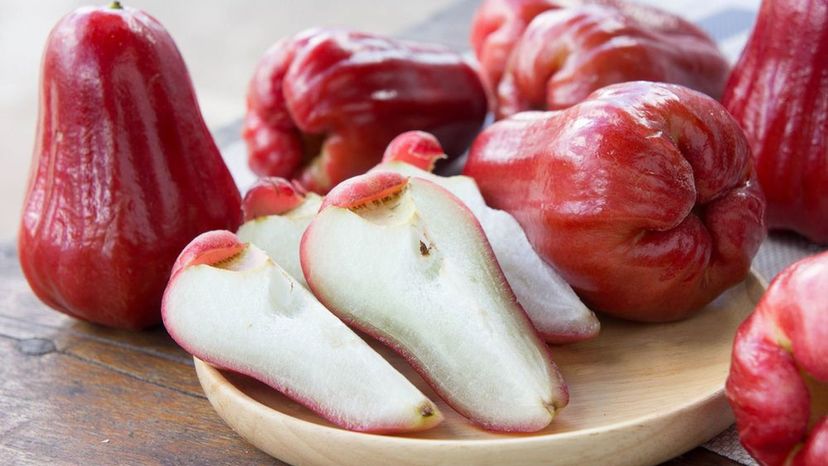
TMDB or Shutterstock
Which exotic fruit/vegetable corresponds with this image?
Salsify
Salak
Romanesco
Rose Apples
Rose apples are bell-shaped fruits that are just like regular apples. They are crispy and crunchy, like your typical apple, but they taste and smell like roses. Rose apples are popular in Asia and are native to the East Indies. The fruits spoil quickly, so they aren't common in supermarkets.
Advertisement
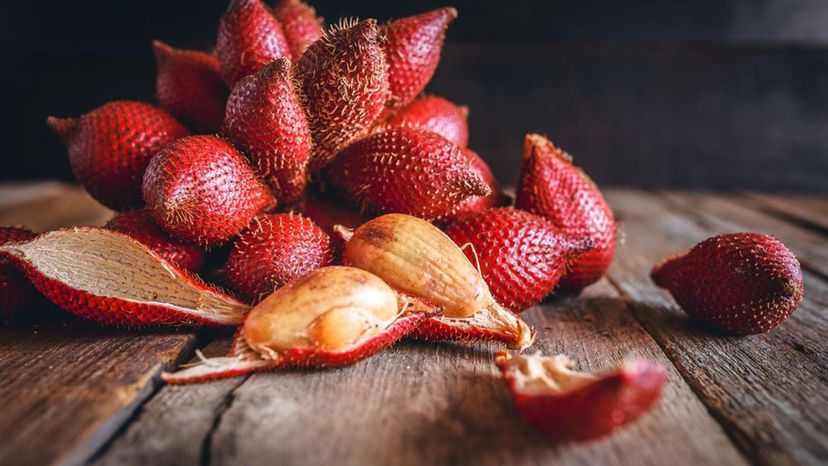
TMDB or Shutterstock
Which exotic fruit/vegetable corresponds with this image?
Sapodilla
Salak
Salak, also called snake fruit, are native to Indonesia, Malaysia, and Brunei. The small individual fruits are covered in a scaly skin that looks incredibly similar to a snake. The inner meat is sweet and acidic, and the texture is similar to an apple.
Salsify
Santol
Advertisement
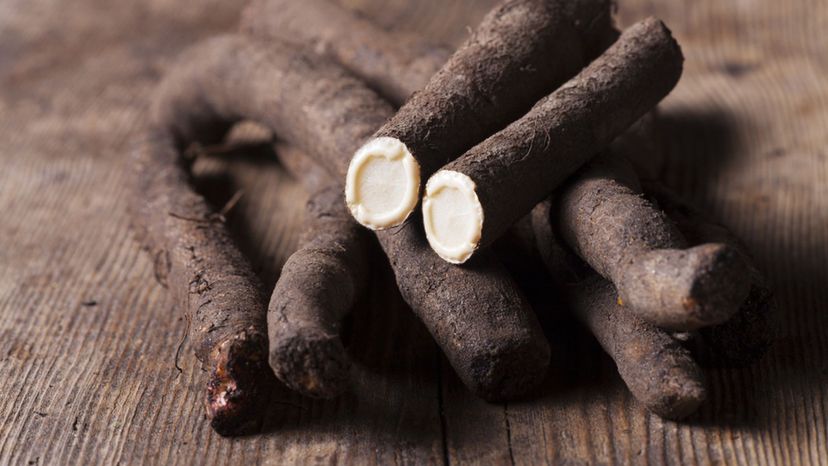
TMDB or Shutterstock
Which exotic fruit/vegetable corresponds with this image?
Sapodilla
Santol
Sea Beans
Salsify
Salsify is a tan-colored root vegetable that looks like a parsnip or a carrot, but with a different color. When it is peeled and cooked, the veggie tastes a lot like an artichoke. It is commonly used outside of the United States.
Advertisement
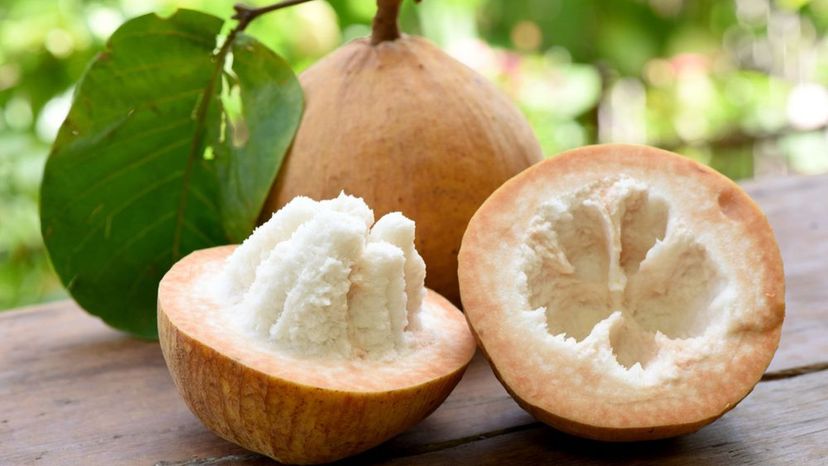
TMDB or Shutterstock
Which exotic fruit/vegetable corresponds with this image?
Sugar Apple
Santol
The flavor of the santol is totally dependent on which part of the fruit is eaten. Some parts of the santol are extremely sweet, while other parts are sour. The pulp is the sour part. People in India, Indonesia, and the Philippines commonly use this.
Sapodilla
Starfruit
Advertisement
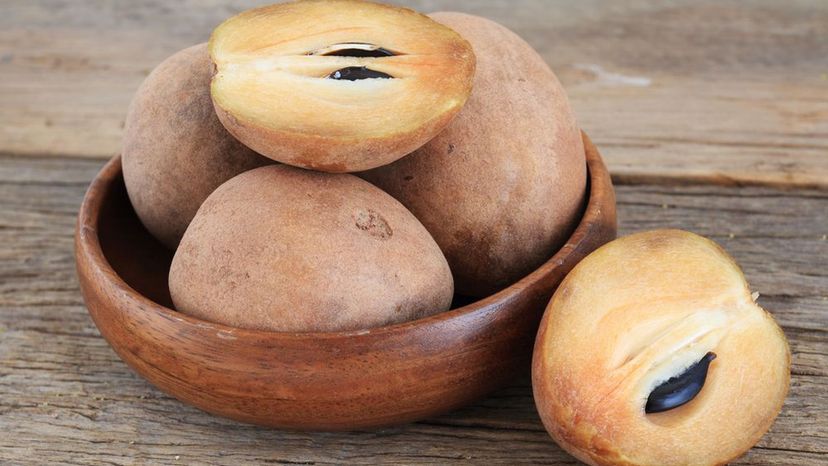
TMDB or Shutterstock
Which exotic fruit/vegetable corresponds with this image?
Sapodilla
This Sapodilla was originally found in Mexico, although it is also very popular in the Philippines. The super sweet interior, which looks like a potato, is often sweet, like candy. It is not common in the US.
Sugar Apple
Sunchoke
Tomatillo
Advertisement
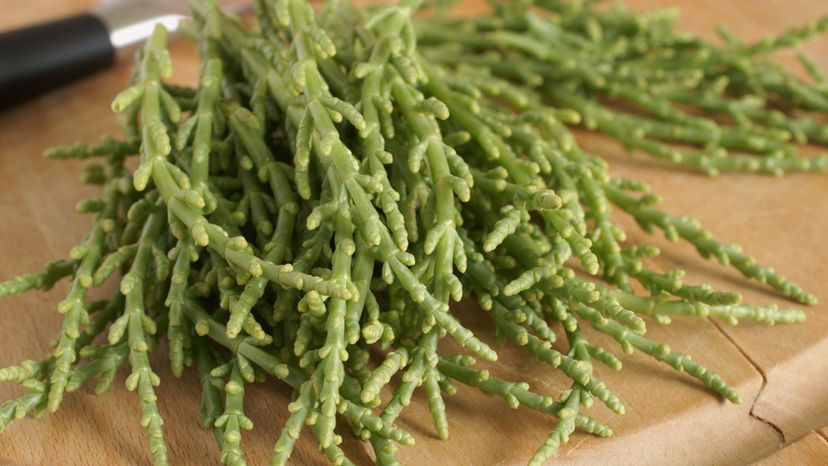
TMDB or Shutterstock
Which exotic fruit/vegetable corresponds with this image?
Sea Beans
This green veggie has a bunch of different names, including sea pickles, sea asparagus, and pickle weed. It grows on salt marches and beaches. Sea beans can be eaten raw, but they are very salty, so they typically are cooked in water to tone down the saltiness.
Sapodilla
Starfruit
Sugar Apple
Advertisement
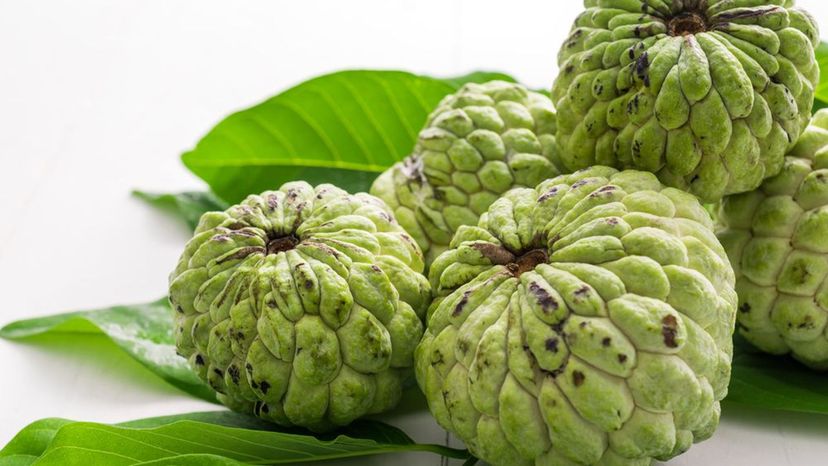
TMDB or Shutterstock
Which exotic fruit/vegetable corresponds with this image?
Sugar Apple
The sugar apple actually looks more like a raspberry than an apple. The inside of the fruit is yellow and has the flavor and texture of custard. Another common name for it is custard apple. This fruit is common in South Asia, although it is native to the Americas.
Starfruit
Sunchoke
Sea Beans
Advertisement
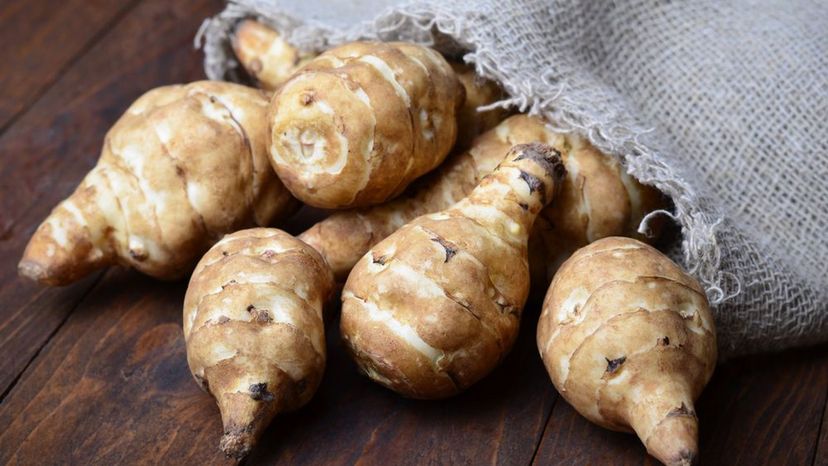
TMDB or Shutterstock
Which exotic fruit/vegetable corresponds with this image?
Sunchoke
The sun choke is also commonly called Jerusalem artichoke. It is native to Northeastern America. The root is actually a species of sunflower, but this type of sunflower is grown for its root. Sunchokes have a sweet and nutty flavor, very similar to artichokes and salsify.
Tomatillo
Ugli Fruit
White Asparagus
Advertisement
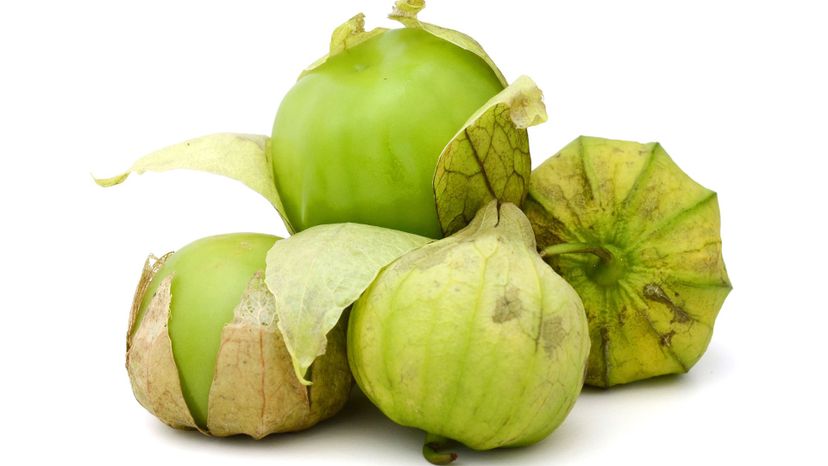
TMDB or Shutterstock
Which exotic fruit/vegetable corresponds with this image?
Tomatillo
Tomatillos are not in the tomato family. They stay green when they are ripe instead of turning red. They are an important part of Mexican cuisine and are often used in sauces, spices, and other things. While they look like unripe tomatoes, tomatillos are more tart in flavor.
White Asparagus
Ugli Fruit
Starfruit
Advertisement
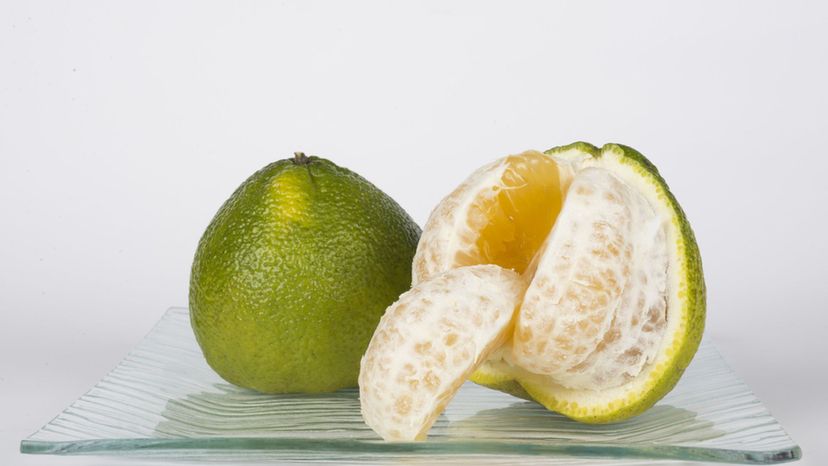
TMDB or Shutterstock
Which exotic fruit/vegetable corresponds with this image?
Yangmei
Tomatillo
White Asparagus
Ugli Fruit
Native to Jamaica, ugli fruits are a combination of grapefruits, oranges, and tangerines. They are sweet and juicy, and their wrinkly, yellowish, peel doesn't look as appealing as the inside juiciness tastes.
Advertisement
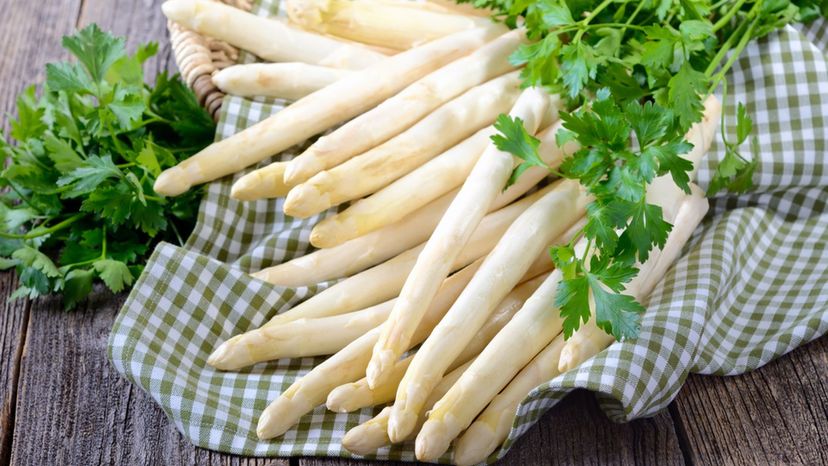
TMDB or Shutterstock
Which exotic fruit/vegetable corresponds with this image?
Yangmei
Yuzu
White Asapargus
White asparagus and regular asparagus are actually the same vegetable, despite their color differences. White asparagus is grown without sunlight, so it never turns green. It is popular in Europe - more tender and less bitter than the green variety.
Tomatillo
Advertisement
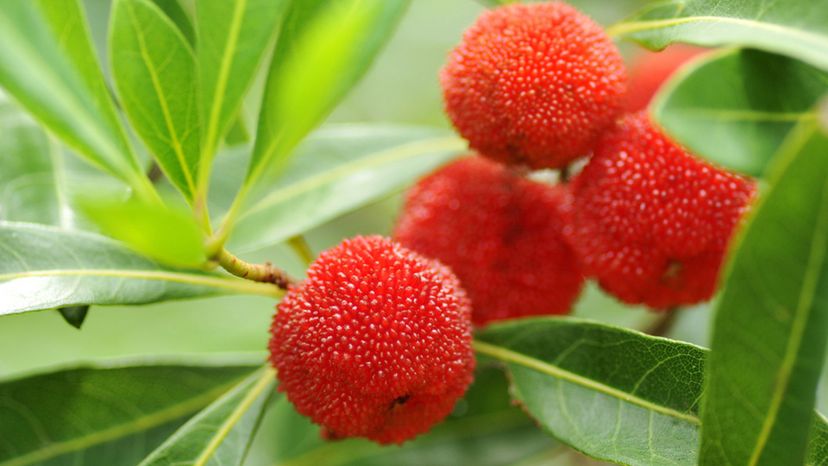
TMDB or Shutterstock
Which exotic fruit/vegetable corresponds with this image?
White Asparagus
Starfruit
Yuzu
Yangmei
Yangmei are small red fruits native to China. They are also called Chinese bayberries or Chinese strawberries. They look like berries and grow on trees. The small red circles that make up the outside of the fruit are eaten along with the inner meat.
Advertisement
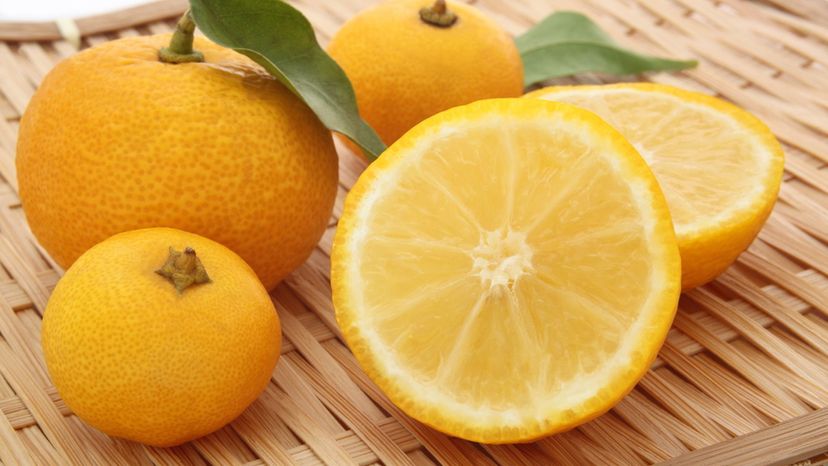
TMDB or Shutterstock
Which exotic fruit/vegetable corresponds with this image?
Purple sweet potato
Yuzu
Yuzu is native to East Asia. The trees can survive in cold climates, which is not common for a citrus fruit. Much like lemons, yuzu aren't typically eaten raw or by themselves, because they are so tart. The zest and juice are often used in cooking, especially in Japanese food.
Yangmei
Yamogobo
Advertisement
You Got:
/50
Shutterstock